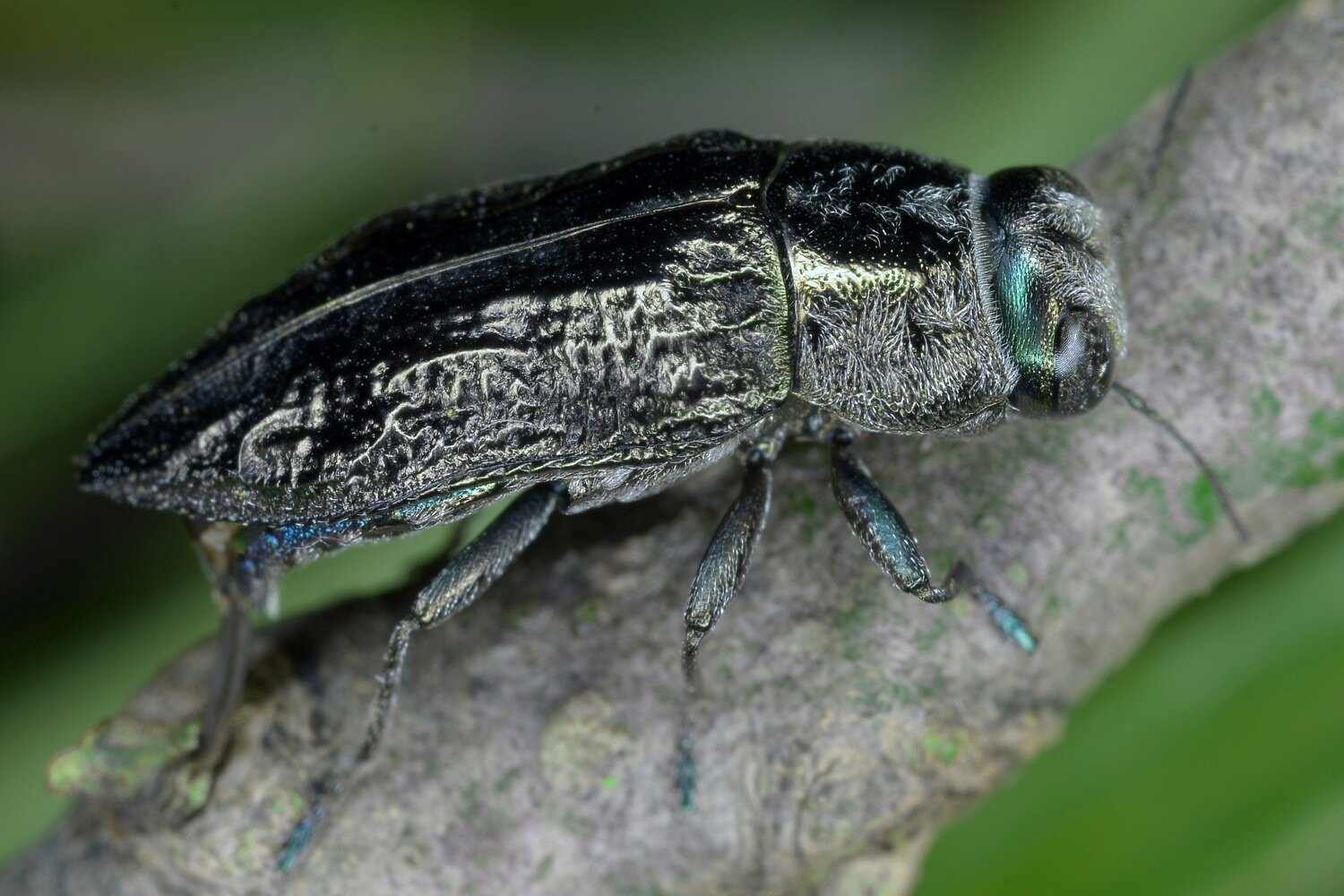The mystery of the Abnormal Jewel Beetle
A 67 year-old mystery solved by citizen science and social media.
I’m calling it the Abnormal Jewel Beetle, because every species should have a common name, but the entomologists know it as Melobasis abnormis. I first heard of it in September 2020 when a request for help was posted to citizen science Facebook groups: “Urgently wanted - live collection of a rare Jewel Beetle to be photographed for a book currently in preparation on the Jewel Beetles of Victoria.”
Adult Jewel Beetles are only active on their host plant for a short time and this one was currently emerging. But the entomologists were locked down by Covid-19 travel restrictions and could not undertake field-work in Victoria.
The details were sketchy. The Beetle had not been collected in living memory. The last record was from 1953, when individuals were cut from a tree in Hattah, in the Mallee of north-western Victoria. To add to the mystery, the host plant for adult Abnormal Jewel Beetles was unknown. It could be Sugarwood (Myoporum platycarpum), maybe Quandong (Santalum spp.) but was probably Weeping Pittosporum (Pittosporum angustifolium). Maybe.
Our conservation property, Raakajlim, is on the northern boundary of Hattah-Kulkyne National Park. I was absolutely up for a search for a small beetle, only 1.5 cm long, that may or may not still be around.
I don’t know a lot about Jewel Beetles so I gathered together all the intelligence I could. I drew a sketch of what I was looking for - “big eyes, short head, antennae not clubbed, broad thorax (that’s the neck to me), elongated body with a metallic sheen”. Okay.
“Mostly nectar feeders and can be found on foliage on sunny days. The larvae are wood-borers and the emergence holes are oval tunnels in the wood.” Got it.
And somewhere on the internet I read this useful tip: “When disturbed, Jewel Beetles retract their legs, drop to the ground and lay there, as if dead.” I guess they think they are hiding from a predator, but it should actually make them fairly easy to collect by shaking the foliage of the host plant and pouncing on the fallen beetles, or so I thought.
For the next couple of weeks, I searched and shook every possible host plant I came across. My family thought I was nuts. But I was excited because Jewel Beetles are beautiful, like the Callitris Jewel Beetle I’d found some time ago. The Family Buprestidae are called the flying gems. They can be brilliantly colored and were once so widely collected they needed to be protected by law. They were highly prized for collections and were used as brooches and ornaments.
I did wonder what my Jewel Beetle would look like, if I found it. The photographs of the specimens held in the Museum of Victoria seemed a bit dull … perhaps just because they were old and dead.
Finally, one day after quite a few false starts with insects that weren’t even beetles, a single Jewel Beetle dropped to the ground in front of me when I shook a Weeping Pittosporum. I snatched it up and rushed home to post photos to the internet. “Is this the one?” I asked. The answer came back from entomologist Martin Lagerwey almost immediately, “Allen (Sundholm) has confirmed this is the species we are looking for. You are awarded a golden star and a mention in the book. I hope you are excited as we certainly are.”
And I was excited. Excited that we had solved the mystery of the host plant. Excited to make contact via social media with some very interesting entomologists … but not hugely excited about the appearance of my small, bronze-colored beetle. It appeared to be nothing like its showy cousins who come in red with spots, or lime green or have a deep iridescent lustre.
Nevertheless, I ended up finding nine beetles and carefully packaged them up to be photographed by entomologist, Allen Sundholm OAM. Luckily the beetles weren’t delayed by Covid-19 online shopping, and they arrived alive. When Allen sent me the photographs he had taken, I was amazed. Allen’s skillful macro photography had brought out intricate detail not apparent to my eye, nor with my little point and shoot camera. It turns out my Abnormal Jewel Beetle is beautiful! It has blue legs, a greeny-blue scarf and an iridescent blue bottom which we could see because one female decided to lay an egg during the photo-shoot!
I think Abnormal Jewel Beetle is an excellent name. Allen says “Melobasis abnormis is very unusual for a jewel beetle in that the dorsal surface, especially the elytra (wing cases), are irregularly sculptured, as if they had failed to form properly when the beetle emerged from its pupal case. However, this is the normal structure of this species, and, combined with its dark color, may act as camouflage when sitting on the trunk of its host tree.”
More about Jewel Beetle:
A book on the Jewel Beetles of Victoria is currently in preparation and is expected to be published by the Entomological Society of Victoria some time in 2021.
Buprestidae of South Australia http://syzygium.xyz/buprestidae/introduction.php
http://museum.wa.gov.au/explore/beetles
https://www.australiangeographic.com.au/topics/wildlife/2017/07/jewel-beetles-flying-gems/
And another story about citizen science and lock down:
https://www.abc.net.au/news/2020-09-30/new-jumping-spider-found-in-nsw-backyard/12718220






